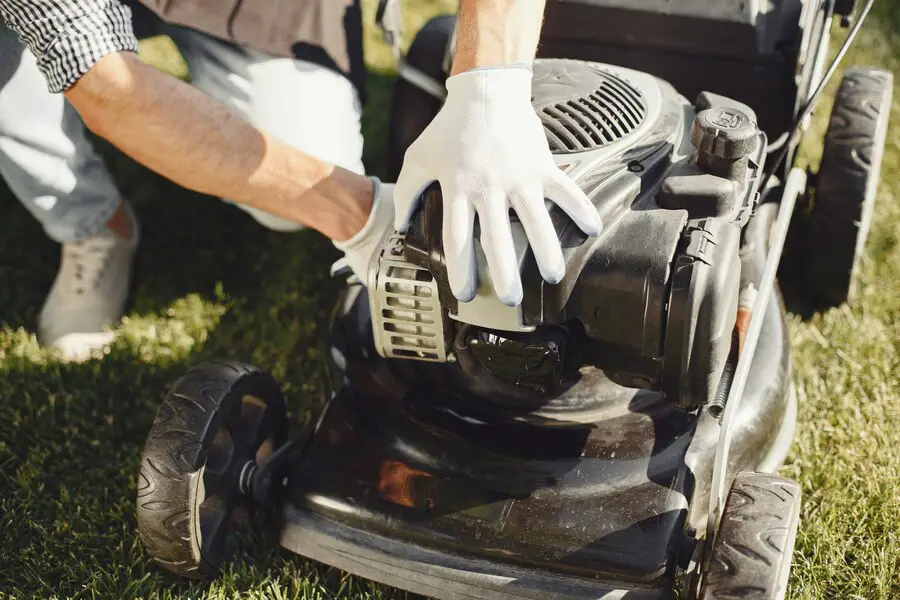
When it comes to maintaining your lawn mower, one of the most effective ways to boost its performance is by upgrading the carburetor. If you’re struggling with poor engine performance, rough idling, or excessive fuel consumption, installing a new carburetor can make a world of difference. In this comprehensive guide, we’ll take you through everything you need to know about upgrading your lawn mower with a new carburetor, from understanding the role of the carburetor to choosing the right one for your mower. By the end of this post, you’ll have the tools and knowledge to take your mower to the next level!
What Is a Carburetor and Why Is It Important?
Before diving into the process of upgrading, it’s essential to understand the role of a carburetor in your lawn mower. The carburetor is a key component in the engine’s fuel system, responsible for mixing air and fuel in the correct proportions before it enters the engine’s combustion chamber. This mixture ensures the engine runs smoothly, efficiently, and at peak performance.
A well-maintained carburetor will:
- Improve engine performance by ensuring the correct fuel-to-air ratio.
- Reduce fuel consumption, as it helps your mower use fuel more efficiently.
- Prevent rough idling and stalling, keeping your mower running steadily.
- Extend the lifespan of the engine by preventing unnecessary strain and wear.
If your lawn mower is showing signs of poor performance, a faulty or outdated carburetor could be to blame.
Signs It’s Time to Upgrade Your Carburetor
How do you know when it’s time to upgrade your carburetor? While some minor issues can be addressed with cleaning or adjustments, certain signs indicate that a full replacement might be necessary.
Here are some common symptoms that suggest your carburetor needs attention:
- Difficulty Starting the Mower: If your mower is hard to start or takes multiple tries to fire up, it could be due to a clogged or worn-out carburetor.
- Rough Idling: When your mower struggles to maintain a steady idle, it’s a sign that the carburetor isn’t regulating the fuel-to-air mixture properly.
- Poor Acceleration: If the mower hesitates when you try to accelerate or lacks power, a faulty carburetor may be the cause.
- Excessive Fuel Consumption: If you’re burning through gas faster than usual, the carburetor might not be delivering the right amount of fuel to the engine.
- Black Smoke from the Exhaust: This is a clear indicator that your carburetor is allowing too much fuel to enter the engine, creating an overly rich mixture.
If you’re experiencing any of these issues, it might be time to upgrade your carburetor to restore your mower’s optimal performance.
Choosing the Right Carburetor for Your Lawn Mower
Selecting the right carburetor is crucial for your lawn mower’s performance. Not all carburetors are compatible with every model, so it’s essential to choose one that fits your specific mower. Here’s how to make the right decision:
1. Consult Your Lawn Mower’s Manual
Always start by consulting your mower’s manual. It will list the type and model of carburetor that is recommended for your mower. This is the most straightforward way to ensure compatibility.
2. Check the Engine Make and Model
If you’ve lost the manual or don’t have one, the engine’s make and model are the next best reference. Most lawn mower engines are made by well-known manufacturers like Honda, Briggs & Stratton, or Kohler, and each of these manufacturers will have specific carburetors designed for their engines.
3. Consider the Type of Carburetor
There are different types of carburetors, including:
- Float Carburetors: These are the most common and work by using a float to regulate the fuel level in the carburetor bowl.
- Diaphragm Carburetors: Often found in smaller engines, these carburetors use a diaphragm to regulate the fuel mixture.
- Electronic Fuel Injection (EFI): Found in newer models, EFI systems are more advanced but may require more complex installation procedures.
The carburetor you choose should match the specifications required by your mower’s engine.
4. Look for Quality Aftermarket Options
While it’s always best to go with the OEM (Original Equipment Manufacturer) carburetor, aftermarket carburetors can be a more affordable option. Ensure that the aftermarket carburetor is made by a reputable brand and is compatible with your mower.
Step-by-Step Guide to Upgrading Your Lawn Mower Carburetor
Now that you’ve selected the right carburetor, it’s time to dive into the installation process. Replacing a carburetor on your lawn mower can seem daunting, but with the right tools and some basic mechanical knowledge, you can do it yourself. Here’s a step-by-step guide to help you along the way:
Tools You’ll Need:
- Wrenches and socket set
- Screwdriver
- Carburetor cleaner
- New carburetor (OEM or aftermarket)
- Gasket or sealant (if needed)
- Pliers
- Clean rags
1. Prepare the Mower
Start by turning off the mower and disconnecting the spark plug. This will prevent any accidental starts while you’re working on the engine. Make sure the mower is on a flat surface, and it’s a good idea to have a workbench or clear area to lay out your tools.
2. Remove the Old Carburetor
Locate the carburetor on your mower. It will typically be attached to the engine via bolts and a fuel line. Here’s how to remove it:
- Disconnect the fuel line: Use pliers to gently remove the fuel line from the carburetor. Be cautious, as fuel might spill out.
- Unbolt the carburetor: Use a wrench to loosen and remove the bolts that secure the carburetor to the engine.
- Remove the carburetor: Once the bolts are removed, gently pull the carburetor away from the engine.
3. Clean the Area
Before installing the new carburetor, clean the mounting area on the engine and inspect the area for any dirt, debris, or old gasket material. It’s essential to ensure a clean, smooth surface for the new carburetor.
4. Install the New Carburetor
Now it’s time to install the new carburetor:
- Place the new gasket (if provided) onto the carburetor mounting surface.
- Attach the carburetor: Position the new carburetor onto the engine and align it with the mounting holes.
- Bolt the carburetor into place: Tighten the bolts securely, but be careful not to overtighten.
- Reconnect the fuel line: Slide the fuel line back onto the carburetor, ensuring it’s tight to prevent leaks.
5. Test the Mower
Once everything is reassembled, reconnect the spark plug, and start the mower. It should fire up quickly and run smoothly. Check for any signs of fuel leaks or issues with the idling. If everything seems in order, you’ve successfully upgraded your carburetor!
Tips for Maintaining Your New Carburetor
After upgrading your carburetor, regular maintenance will ensure that it continues to perform at its best. Here are some tips to keep in mind:
- Clean the carburetor regularly: Dirt and debris can clog the carburetor, so use a carburetor cleaner every few months to keep it clean.
- Change the air filter: A clogged air filter can affect the fuel mixture, so replace it regularly to prevent issues.
- Use fresh fuel: Stale fuel can damage the carburetor and cause starting issues. Always use fresh gasoline and consider adding a fuel stabilizer if you don’t use your mower often.
- Check for leaks: Regularly inspect the carburetor for any signs of fuel leaks, which can lead to poor performance and potential hazards.
Real-Life Example: How a Carburetor Upgrade Saved the Day
Let’s take a look at a real-life example. John, a homeowner in Florida, had been struggling with his lawn mower for months. Despite cleaning the carburetor multiple times, it would still run rough, burn excess fuel, and often wouldn’t start at all. After consulting a local repair shop, he decided to upgrade to a high-quality aftermarket carburetor.
The results were remarkable: the mower started on the first pull, idled smoothly, and burned less fuel. He was able to finish his lawn care without any interruptions, and his fuel costs decreased significantly. What was once a frustrating chore became a quick and efficient task.
Conclusion
Upgrading your lawn mower with a new carburetor is a smart investment that can restore its performance and extend its lifespan. By recognizing the signs that your carburetor is failing, choosing the right replacement, and following the installation steps carefully, you can enjoy a smoother, more efficient lawn mowing experience. Whether you’re a seasoned DIYer or a beginner, this upgrade is within your reach, and the results are worth the effort.
So, roll up your sleeves, get the right parts, and give your mower the upgrade it deserves!



